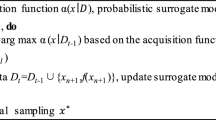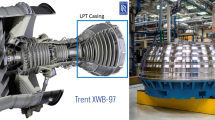Abstract
Tool wear monitoring is a major concern in securing surface quality of workpieces and performance of the machining process. Most existing tool wear monitoring techniques seem to have looked at places other than the tool itself for solution or simply inapplicable in the highly automated industries. With insights from these techniques, this paper thus proposes an image-processing-based tool wear monitoring method that combines random forest classifier (RFC) and a multiple linear regression (MLR) model to detect different wear conditions and evaluate the remaining grinding ability for robotic belt grinding. Through a non-contact digital microscope capturing images of belt surfaces, the correlation between abrasive grain area and grinding belt life is established, the tree-based RFC method is applied for belt condition monitoring, and a MLR model to grinding ability evaluation. Results from training and testing verify the validity of the proposed monitoring method: the total prediction accuracy of RFC is over 90% under different grinding belt conditions, and the mean absolute percentage error of the MLR model is less than 3.39%.




















Similar content being viewed by others
References
Huang H, Gong Z, Chen X, Zhou L (2012) Robotic grinding and polishing for turbine-vane overhaul. J Mater Process Technol 127:140–145. https://doi.org/10.1016/S0924-0136(02)00114-0
Ren X, Cabaravdic M, Zhang X, Kuhlenkötter B (2007) A local process model for simulation robotic belt grinding. Int J Mach Tools Manuf 47(6):962–970. https://doi.org/10.1016/j.ijmachtools.2006.07.002
Zhou P, Zhao X, Tao B, Ding H (2020) Time-varying isobaric surface reconstruction and path planning for robotic grinding of weak-stiffness workpieces. Robot Comput Integr Manuf 64:101945. https://doi.org/10.1016/j.rcim.2020.101945
Kurada S, Bradley C (1997) A review of machine vision sensors for tool condition monitoring. Comput Ind 34:55–72. https://doi.org/10.1016/S0166-3615(96)00075-9
Inasaki I (1999) Sensor fusion for monitoring and controlling grinding processes. Int J Adv Manuf Technol 15(10):730–736. https://doi.org/10.1007/s001700050125
Lezanski P (2001) An intelligent system for grinding wheel condition monitoring. J Mater Process Technol 109(3):258–263. https://doi.org/10.1016/S0924-0136(00)00808-6
Shi D, Gindy NN (2007) Tool wear predictive model based on least squares support vector machines. Mech Syst Signal Process 21:1799–1814. https://doi.org/10.1016/j.ymssp.2006.07.016
Warren Liao T, Ting C-F, Qu J, Blau PJ (2007) A wavelet-based methodology for grinding wheel condition monitoring. Int J Mach Tools Manuf 47(3-4):580–592. https://doi.org/10.1016/j.ijmachtools.2006.05.008
Mezghani S, El Mansori M (2008) Abrasiveness properties assessment of coated abrasives for precision belt grinding. Surf Coat Technol 203(5-7):786–789. https://doi.org/10.1016/j.surfcoat.2008.08.058
Xiaoqiang Z, Huabin C, Jijin X, Xuefeng S, Junwei W, Xiaoqi C (2018) A novel sound-based belt condition monitoring method for robotic grinding using optimally pruned extreme learning machine. J Mater Process Tech 260:9–19. https://doi.org/10.1016/j.jmatprotec.2018.05.013
Choudhury SK, Rath S (2000) In-process tool wear estimation in milling using cutting force model. J Mater Process Technol 99(1):113–119. https://doi.org/10.1016/S0924-0136(99)00396-95
Chen XQ, Li HZ (2009) Development of a tool wear observer model for online tool condition monitoring and control in machining nickel-based alloys. Int J Adv Manuf Technol 45:786–800. https://doi.org/10.1007/s00170-009-2003-1
Gajate A, Haber R, del Toro R, Vega P, Bustillo A (2012) Tool wear monitoring using neuro-fuzzy techniques: a comparative study in a turning process. J Intell Manuf 23(3):869–882. https://doi.org/10.1007/s108450100443-y
Gill S, Singh R, Singh J, Singh H (2012) Adaptive neuro-fuzzy inference system modelling of cryogenically treated AISI M2 HSS turning tool for estimation of flank wear. Expert Syst Appl 39:4171–4180. https://doi.org/10.1016/j.eswa.2011.09.117
Junqi C, Junwei W, Xiaoqiang Z, Feng C, Xiaoqi C (2017) Acoustic signal based tool wear monitoring system for belt grinding of superalloys. 12th IEEE Conference on Industrial Electronics and Applications (ICIEA); 978-1-5090-6161-7/17. https://doi.org/10.1109/ICIEA.2017.8283036
Xiaoqiang Z, Jijin X, Junwei W, Junqi C, Xukai R, Xiaoqi C (2018) An intelligent method to monitor the abrasive belt condition based on sound signals. 2018 13th IEEE Conference on Industrial Electronics and Applications (ICIEA); 978-1-5386-3758-6/18. https://doi.org/10.1109/ICIEA.2018.8397689
Pandiyan V, Caesarendra W, Tjahjowidodo T, Praveen G (2017) Predictive modelling and analysis of process parameters on material removal characteristics in abrasive belt grinding process. Appl Sci 7(4):363. https://doi.org/10.3390/app7040363
Vigneashwara P, Wahyu C, Tegoeh T, Hock HT (2018) In-process tool condition monitoring in compliant abrasive belt grinding process using support vector machine and genetic algorithm. J Manuf Process 31:199–213. https://doi.org/10.1016/j.jmapro.2017.11.014
Huang Z, Zhu J, Lei J (2019) Tool wear predicting based on multi-domain feature fusion by deep convolutional neural network in milling operations. J Intell Manuf:1–14. https://doi.org/10.1007/s10845-019-01488-7
Vigneashwara P, Tegoeh T (2019) Use of acoustic emissions to detect change in contact mechanisms caused by tool wear in abrasive belt grinding process. Wear 436–437:203047. https://doi.org/10.1016/j.wear.2019.203047
Can C, Jianyong L, Yueming L, Meng N, Wenxi W (2019) Deep convolutional neural network-based in-process tool condition monitoring in abrasive belt grinding. Comput Ind 106:1–13. https://doi.org/10.1016/j.compind.2018.12.002
Blunt L, Ebdon S (1996) The application of three-dimensional surface measurement techniques to characterizing grinding wheel topography. Int J Mach Tools Manuf 36(11):1207–1226. https://doi.org/10.1016/0890-6955(96)00041-7
Fan KC, Lee MZ, Mou JI (2002) On-line non-contact system for grinding wheel wear measurement. Int J Adv Manuf Technol 19(1):14–22. https://doi.org/10.1007/PL00003964
Lachance S, Warkentin A, Bauer R (2003) Development of an automated system for measuring grinding wheel wear flats. J Manuf Syst 22(2):130–135. https://doi.org/10.1016/S0278-6125(03)90010-0
AlperSelver M, Olcay A, Fikret A, Sibel B, Mehmet O (2011) An automated industrial conveyor belt system using image processing and hierarchical clustering for classifying marble slabs. Robot Comput Integr Manuf 27:164–176. https://doi.org/10.1016/j.rcim.2010.07.004
Wojciech K, Czeslaw L, Krzysztof N (2012) Methodology of the assessment of the abrasive tool’s active surface using laser scatterometry. Trans Can Soc Mech Eng 36(1):49–66 https://doi.org/10.1139/tcsme-2012-0004
Dutta S, Pal SK, Mukhopadhyay S, Sen R (2013) Application of digital image processing in tool condition monitoring: a review. CIRP J Manuf Sci Technol 6(3):212–232. https://doi.org/10.1016/j.cirpj.2013.02.005
Amir MT, Zhao HL, Henri C, Bruce H, Marin L (2015) Characterization of grinding wheel grain topography under different robotic grinding conditions using confocal microscope. Int J Adv Manuf Technol 80(5-8):1159–1171. https://doi.org/10.1007/s00170-015-7109-z
Dariusz L, Wojciech K (2016) Metrological aspects of abrasive tool active surface topography evaluation. Metrol Meas Syst 23(4):567–577. https://doi.org/10.1515/mms-2016-0043
Wojciech K, Filip A, Dariusz L (2018) The methodology of modelling of the grinding wheels active surface. Mechanik 10:907–914 https://doi.org/10.17814/mechanik.2018.10.160
Can C, Jianyong L, Yueming L, Meng N, Wenxi W (2020) An online belt wear monitoring method for abrasive belt grinding under varying grinding parameters. J Manuf Process 50:80–89. https://doi.org/10.1016/j.jmapro.2019.12.034
Han XS, Wu TY (2013) Analysis of acoustic emission in precision and high-efficiency grinding technology. Int J Adv Manuf Technol 67(9):1997–2006. https://doi.org/10.1007/s00170-012-4626-x
National Instruments Corporation (2011) NI vision concepts manual. National Instruments Corporation http://www.ni.com/pdf/manuals/372228
James G, Witten D, Hastie T, Tibshirani R (2013) An introduction to statistical learning. Springer, New York, pp 316–321
Yan X, Su XG (2009) Linear regression analysis: theory and computing. World Sci:1–2 https://doi.org/10.1111/j.1751-5823.2010.00109_11.x
Acknowledgements
The authors thank Xiamen Lota International Company, LTD for kindly providing the required belts and their service durations.
Funding
This work was funded by the National R&D Program support, China (No. 2017YFB1301501).
Author information
Authors and Affiliations
Corresponding author
Additional information
Publisher’s note
Springer Nature remains neutral with regard to jurisdictional claims in published maps and institutional affiliations.
Rights and permissions
About this article
Cite this article
Oo, H., Wang, W. & Liu, Z. Tool wear monitoring system in belt grinding based on image-processing techniques. Int J Adv Manuf Technol 111, 2215–2229 (2020). https://doi.org/10.1007/s00170-020-06254-1
Received:
Accepted:
Published:
Issue Date:
DOI: https://doi.org/10.1007/s00170-020-06254-1




